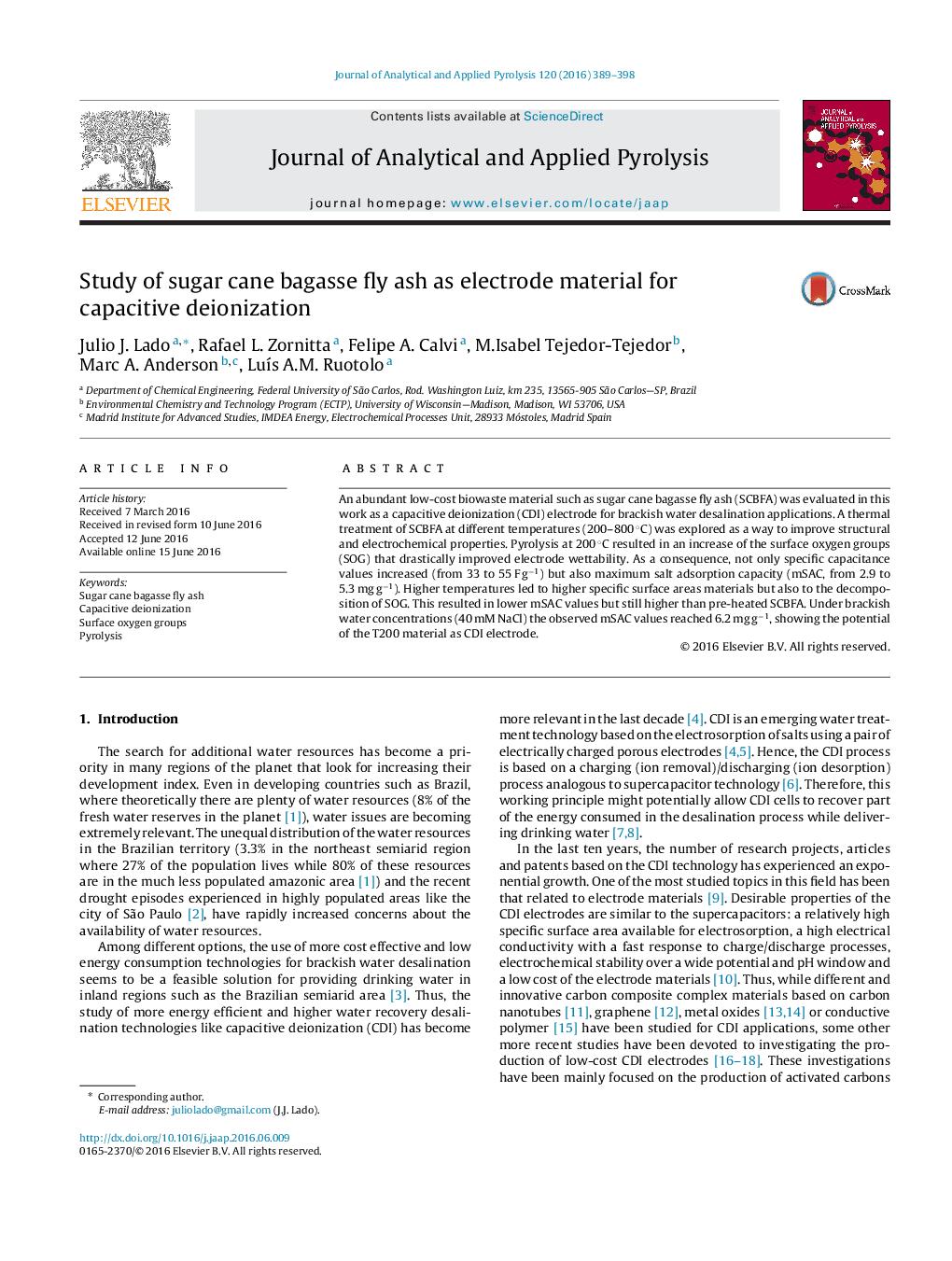| Article ID | Journal | Published Year | Pages | File Type |
|---|---|---|---|---|
| 1196566 | Journal of Analytical and Applied Pyrolysis | 2016 | 10 Pages |
•Sugar cane bagasse fly ash (SCBFA) was successfully employed as CDI electrodes.•Thermal treatment of SCBFA strongly improved electrosorption of salts.•Higher presence of surface oxygen groups was detected for the SCBFA heated at 200 °C.•T200 showed the highest specific capacitance (55 F g−1) and salt removal (6.2 mg g−1).•The extremely low cost of the SCBFA makes it highly competitive for CDI applications.
An abundant low-cost biowaste material such as sugar cane bagasse fly ash (SCBFA) was evaluated in this work as a capacitive deionization (CDI) electrode for brackish water desalination applications. A thermal treatment of SCBFA at different temperatures (200–800 °C) was explored as a way to improve structural and electrochemical properties. Pyrolysis at 200 °C resulted in an increase of the surface oxygen groups (SOG) that drastically improved electrode wettability. As a consequence, not only specific capacitance values increased (from 33 to 55 F g−1) but also maximum salt adsorption capacity (mSAC, from 2.9 to 5.3 mg g−1). Higher temperatures led to higher specific surface areas materials but also to the decomposition of SOG. This resulted in lower mSAC values but still higher than pre-heated SCBFA. Under brackish water concentrations (40 mM NaCl) the observed mSAC values reached 6.2 mg g−1, showing the potential of the T200 material as CDI electrode.
Graphical abstractFigure optionsDownload full-size imageDownload as PowerPoint slide
